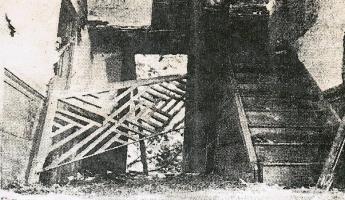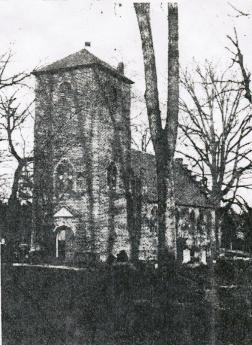Related Topics
No topics are associated with this blog
Survey Asked Of Americas Old Buildings
Survey Asked Of America’s Old Buildings
Ickes Urges $500,000
CWA A Funds to Guard
Historical Treasures
Project Would Employ
1,200 Architects for Six Months.
Washington Post September 29, 1933

|
| Chinese Chippendale Stairway |
Plans for a precedent-setting survey providing work for 1,200 architects and anesthetic review of practically all of America’s antique buildings and bridges have been laid before the Civil Works Administration by Secretary of the Interior Harold L. Ickes, it was announced yesterday.
The survey, the first ever attempted, will cost about $500,000 and last at least two months. Approval of it is expected before the end of this week and work will start immediately.

|
| Charles E. Peterson |
Charles E. Peterson, chief of the Branch of Plans and Design, eastern division, in the Office of National Parks, Buildings and Reservations, originated the scheme to study, measure and draw up plans, elevations and details of the Nation’s disappearing architecture.
“The ravages of fire and the natural elements, together with the demolition and alterations caused by real estate changes, form an inexorable tide of destruction destined to wipe out the great majority of the buildings which knew the beginnings and the first flourish of the Nation,†he said. “It’s is the responsibility of the American people that if the greater number of our antique buildings must disappear through economic causes, they should not pass into unrecorded oblivion.â€
Public buildings, churches, residences, bridges, forts, barns, mills, shops, rural, outbuildings, and any other type of structure of which there are good specimens extant will be recorded. Proposed Virginia studies include St. Peter’s Church, in New Kent County, where George Washington’s marriage is said to have taken place; “The Mansion,†at Bowling Green; Christ Church, in Lancaster County and “Mayfield,†at Petersburg. A Maryland list is under consideration.
Historic associations all over the United States will be invited to suggest buildings for study. Six persons already have been detailed to the Library of Congress, compiling data under the supervision of Dr. Leicester B. Holland, chief of the fine arts division. A photographer has been assigned to make pictures of antique structures along the old National Pike between Fredrick, Md., and Zanesville, Ohio, and Erling H. Pederson, chief assistant on the restoration of Stratford, has been tentatively selected as special assistant to Mr. Pederson, pending an allotment by the C.W.A.

|
| St. Lukes Church |
Seventieth-century houses and ninetieth-century masonry bridges will be given particular emphasis the canvass will include structures erected from earliest times to about 1860. Period, type and locality will be important factors. This would include the best examples of the succeeding styles followed on the Atlantic seaboard and adjoining States, roughly grouped as Jacobean, Georgian, Early Republic, and Greek revival.
Mr. Peterson proposes to include also aboriginal Indian pueblos and villages in the Southwest; Russian remains in Alaska; birthplace of Presidents, statesmen, inventors and other important characters in American history; mining settlements and, if proper archeological supervision is available, excavation of ancient ruins such as Henricopolis, seventieth century settlement on the James River in Virginia, or Indian mounds in the Midwest.
Had such an enterprise been conducted in Colonial times, said the head of the planning unit, fewer difficulties would have been met in the restoration of Wakefield, George Washington’s birthplace.
Upon approval of the project, an advisory committee of seven will be established. Four members will be architects, appointed by the American Institute of Architects, and three, representing civic and patriotic organizations, will be appointed by Arno B. Cammerer director of National Parks, Buildings and Reservations. They will receive traveling expenses but no salaries.
It is planned to divide the work by States with a branch office for each division. It is estimated 60 offices will be needed, each to be manned by one architect of associated grade and one or two clerk stenographers.
Virtually all of the men employed will be recruited from the architectural profession and organized into squads of two, four or six.
The Fine Art Commission and the American Institute of Architects have endorsed the project.
Originally published: Thursday, September 14, 2017; most-recently modified: Thursday, June 06, 2019